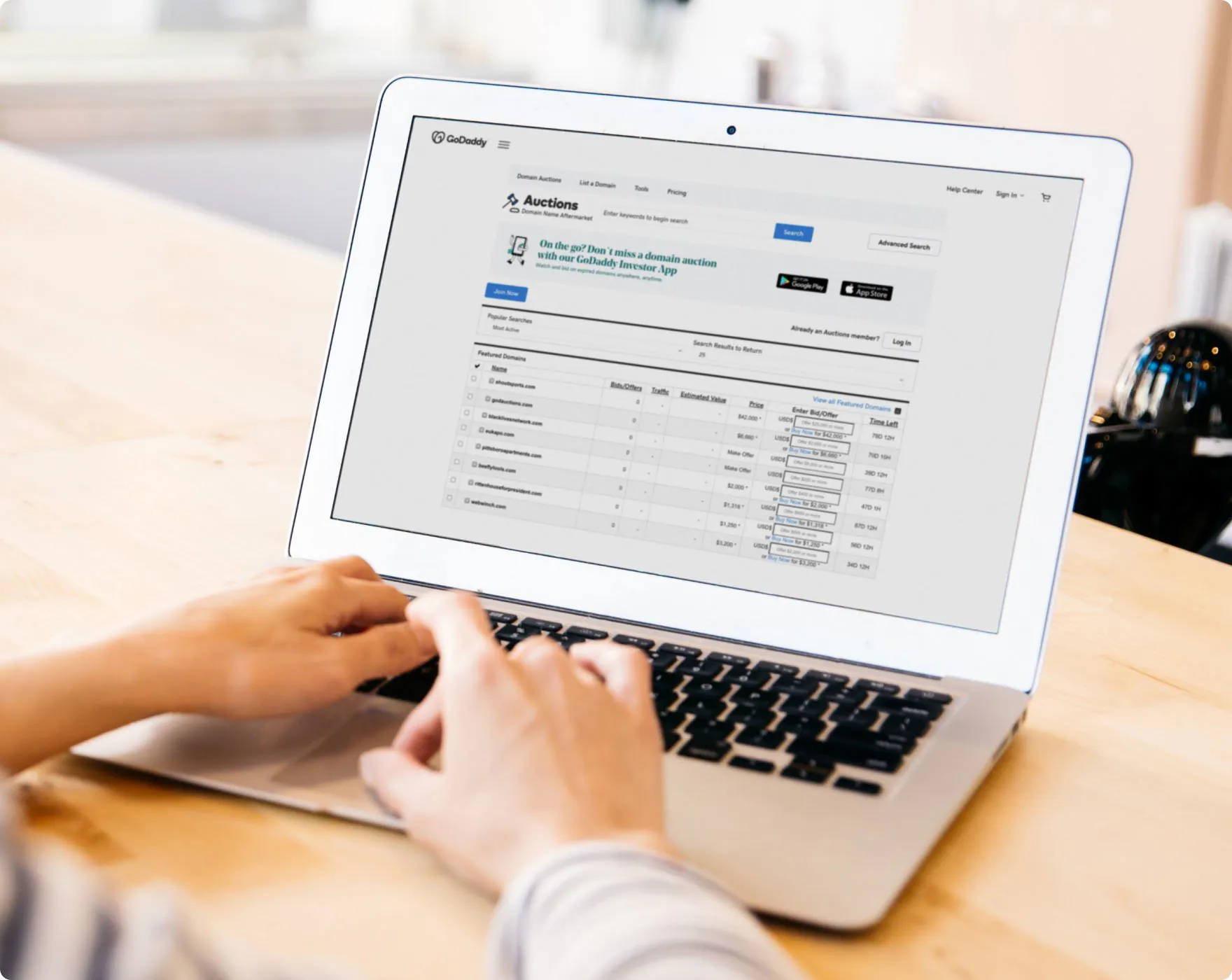
Could buying an aged domain be your secret weapon for SEO success? Imagine having a domain name that comes with pre-packaged authority, backlinks, and traffic, all built by previous owners. Aged domains stand in stark contrast to their newly minted counterparts, providing a launchpad for your digital presence by potentially bypassing the Google “Sandbox” and speeding up website indexing. This article will explore the undeniable benefits of aged domains, how they stack up against new domains, and how you can leverage these advantages to enhance your SEO strategy. Let’s delve into the world of aged domains and discover how they might boost your online visibility.
Understanding Aged Domains and Their Benefits
Aged domains are domain names with a history of being used for live websites, which have accumulated backlinks and domain authority over time. This accumulation offers distinct marketing advantages, as these domains come with existing traffic and established authority. They provide an edge in search engine optimisation (SEO) by potentially bypassing the Google “Sandbox” effect, which can delay new sites from ranking well. The backlinks associated with aged domains are often from authoritative sources, which would be expensive and time-consuming to replicate. This makes them a valuable asset for businesses looking to improve their online presence quickly.
- Backlinks: Aged domains often have a robust backlink profile, providing immediate SEO benefits.
- Authority: The established domain authority helps in achieving higher rankings on search engines.
- Traffic: Existing traffic to the domain can be leveraged for new content and services.
- Speed of Indexing: Search engines index aged domains more quickly than new ones.
- Cost-Effectiveness: Avoid the costs of building domain authority from scratch.
In comparison to new domains, aged domains provide a clear advantage for SEO strategies. New domains often face the uphill task of building authority and earning backlinks from scratch, which can be both time-consuming and costly. In contrast, aged domains already come with established link profiles and domain authority, enabling them to achieve search engine rankings faster and with less effort. By choosing to buy aged domain, businesses can capitalise on this head start, leveraging the domain’s history to gain visibility and traffic more rapidly. This makes aged domains an attractive option for companies seeking to accelerate their SEO success.
Platforms and Marketplaces to Buy Aged Domains
Selecting the right marketplace is crucial for effectively purchasing aged domains. The right platform not only offers a variety of domains but also provides tools to evaluate and assess their potential SEO impact. With prices starting as low as $0.50 per referring domain, these platforms cater to different budgets and strategic goals.

GoDaddy Auctions
GoDaddy Auctions is a well-known platform where buyers can find a wide range of expired and aged domains. The availability of domains is extensive, and the auction format allows potential buyers to bid on domains, ensuring competitive pricing. The platform’s user-friendly interface makes it easier to track auctions and manage bids efficiently.
SerpDomains
SerpDomains specialises in offering domains that are particularly beneficial for SEO. The platform focuses on domains with a strong backlink profile and high domain authority, which are crucial for boosting search engine rankings. SerpDomains provides detailed metrics for each domain, helping buyers make informed decisions based on their specific SEO needs.
ExpiredDomains.net
ExpiredDomains.net is equipped with powerful search tools and domain filtering options, making it easier for buyers to find domains that match their criteria. Users can filter domains based on various metrics such as domain age, backlink quality, and niche relevance. This platform is ideal for those looking to acquire domains with specific attributes that align with their strategic goals.
Evaluating the Quality of an Aged Domain
Evaluating the quality of an aged domain is critical to ensure its potential for boosting SEO. A thorough evaluation can prevent future risks and maximise the domain’s value. This process involves assessing various factors, including the domain’s history and backlink profile, which can significantly impact its effectiveness and safety.
- Domain Age: Check the registration date to understand how long the domain has been active.
- Past Website History: Use archive services to review previous content and usage patterns to avoid spammy history.
- Backlink Quality: Analyse the domain’s backlinks to ensure they are from reputable and relevant sources.
- Topical Relevance: Ensure the domain aligns with your niche or industry to maintain content relevance.
- Trademark Issues: Verify that the domain doesn’t infringe on existing trademarks to avoid legal complications.
- Number of Indexed Pages: Check how many pages are currently indexed by search engines to assess the site’s visibility.
To conduct these checks, use tools like the Wayback Machine to explore the site’s historical content and Ahrefs or Moz to evaluate the backlink profile and domain authority. These tools provide critical insights into the domain’s past performance and potential future impact. Ahrefs can help determine the quality and relevance of backlinks, while Moz offers insights into domain authority and potential SEO benefits. Such due diligence ensures that the domain aligns with your strategic goals and is free from penalties or negative associations.
Pricing Considerations for Aged Domains
The pricing of aged domains can vary significantly, influenced by multiple factors that determine their worth in the market. Generally, the cost of an aged domain is tied to its domain authority, backlink quality, and niche relevance. Domains with a high domain authority and strong, reputable backlink profiles are often priced higher, as they offer immediate SEO benefits. For instance, domains with a comprehensive backlink network from authoritative websites are typically more expensive, ranging from $750 to over $50,000. Conversely, some platforms offer domains for as low as $0.50 per referring domain, catering to different budgets and needs.
| Price Range | Factors |
| $0.50 – $20 | Basic backlink presence |
| $20 – $750 | Moderate domain authority |
| $750 – $10,000 | High-quality backlinks |
| $10,000 – $50,000 | Niche relevance and authority |
Finding affordable aged domains requires strategic approaches. One effective strategy is to monitor expired domain auctions, where competition may be lower and prices more favourable. Additionally, using domain search tools that filter by price, domain authority, and backlink profile can help identify cost-effective options. It is also beneficial to stay informed about market trends and platform promotions that might offer discounts or incentives for bulk purchases. By prioritising these strategies, buyers can secure aged domains that align with their budget and SEO objectives.

Potential Risks and SEO Disadvantages of Aged Domains
Aged domains carry certain risks that can impact SEO performance. One major issue is the potential for Google penalties, which may arise from past associations with low-quality or spammy links. Such links, hidden within the domain’s backlink profile, can trigger algorithmic penalties, reducing the domain’s visibility. Additionally, aged domains may have been subject to previous Google updates, which could have affected their standing in search engine results. These factors make it crucial to thoroughly examine a domain’s backlink history before purchase.
Manual penalties represent another significant risk associated with aged domains, particularly if they have been used as spammy sites or part of private blog networks (PBNs). When a domain is flagged for violating Google’s guidelines, it can receive a manual penalty, drastically affecting its ranking potential. Domains previously used in PBNs are especially vulnerable, as they may have been part of link schemes intended to manipulate rankings. Such histories can lead to long-term SEO challenges and require careful scrutiny.
To mitigate these risks, prospective buyers should employ comprehensive due diligence strategies. This includes using advanced SEO tools to assess the domain’s backlink quality and investigate its historical usage. Ensuring that backlinks are from reputable sources and that the domain was not previously used for dubious purposes is essential. Buyers should also consider consulting with SEO experts to evaluate potential pitfalls and secure domains with a clean bill of health. By taking these precautions, the likelihood of encountering negative SEO impacts is significantly reduced.
Final Words
Exploring the intricacies of aged domains reveals distinct advantages. These domains bring SEO benefits with existing backlinks and established authority.
Choosing the right platform to buy these domains can significantly streamline the acquisition process. Evaluating a domain’s quality ensures that investments are worthwhile. Awareness of potential risks allows for informed decisions and effective risk mitigation.
Whether seeking to boost an online presence or expedite indexing, opting to buy aged domains offers a strategic edge. It combines authority with the chance to bypass common challenges faced by new domains. This proactive approach can enhance digital marketing efforts efficiently.

Eleanor is a literary historian who explores the evolution of writing systems, from ancient scripts to modern digital text.


